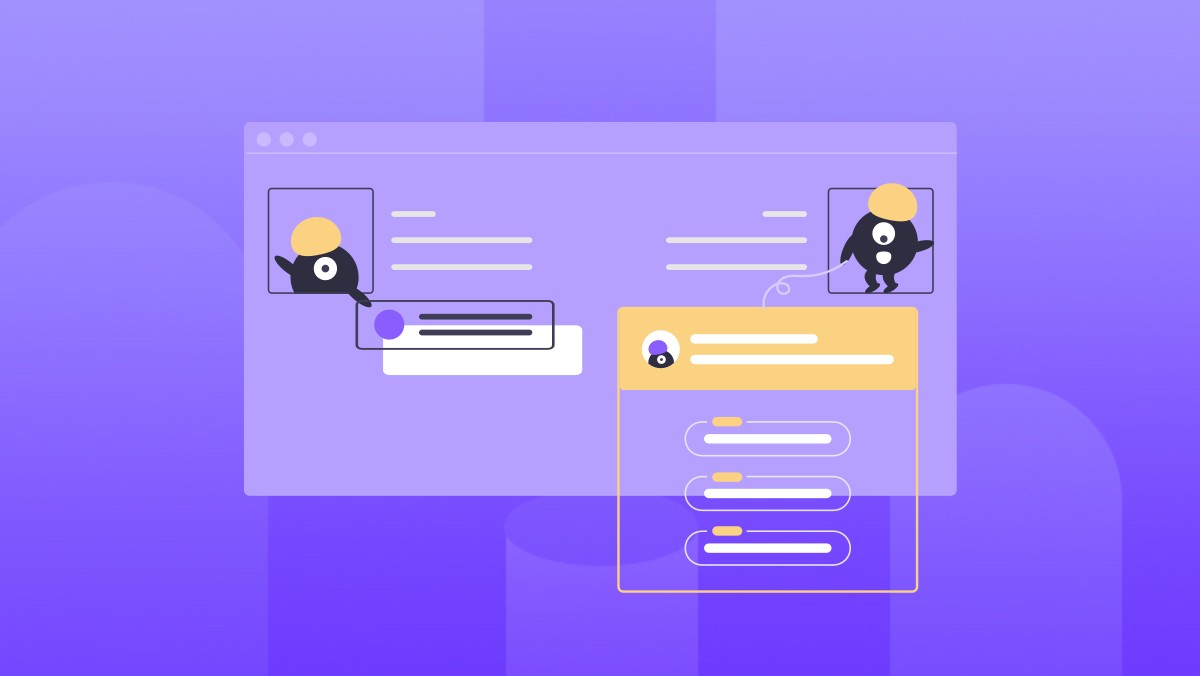本文介绍了Server Component项目实战的各个方面,包括概念、重要性、开发环境搭建、代码编写、测试和部署,以及维护和优化。通过详细步骤和示例代码,帮助读者理解和实践Server Component项目实战。
引入Server Component概念Server Component是服务器端组件化的实践,它将复杂的业务逻辑拆分成更小、更独立的组件,每部分组件负责特定的功能。这种组件化的方法可以提高开发效率,降低代码维护成本,并且支持组件的复用。
什么是Server ComponentServer Component是一种以对象或函数形式封装的服务器端代码模块,它具备独立的功能,并且可以在不同的服务器端应用程序中被调用。Server Component的特点包括:
- 独立性:每个Server Component负责单一的业务逻辑,不依赖于其他特定的代码。
- 可复用性:Server Component可以在不同的项目或服务中重复利用。
- 可维护性:由于每个组件的职责明确,修改或升级时影响范围较小。
Server Component在现代软件开发中扮演着重要的角色。通过组件化,开发团队可以更容易地管理代码库,提高开发效率和代码质量。此外,Server Component还支持以下应用场景:
- 多项目复用:一些常用的业务逻辑可以抽取为通用的组件,供多个项目使用。
- 模块化开发:大型项目可以分解为多个独立的模块,每个模块专注于实现特定的功能。
- 资源优化:通过组件化,可以更有效地管理资源,避免重复开发和维护。
在开始创建Server Component之前,需要先搭建一个适合开发的环境。这包括安装必要的软件和工具,以及初始化一个新的项目。
安装必要的软件和工具要创建Server Component,首先需要安装以下软件和工具:
- 编程语言环境:例如Python、Java或Node.js。
- 开发工具:如Visual Studio Code、IntelliJ IDEA等。
- 版本控制工具:如Git。
- 构建工具:如Maven、Gradle或npm。
- IDE插件:如Python插件、Java插件等。
示例代码
以Python为例,安装Python环境并设置虚拟环境:
# 安装Python
sudo apt-get install python3
# 创建并激活虚拟环境
python3 -m venv env
source env/bin/activate在安装了必要的软件和工具后,接下来需要初始化一个新的项目。以下步骤展示了如何使用Python初始化一个基本的Server Component项目。
创建项目结构
首先,创建一个基本的项目目录结构:
mkdir server_component
cd server_component
mkdir src
mkdir tests初始化项目
在项目根目录下创建一个setup.py文件,用于设置项目的元数据:
from setuptools import setup, find_packages
setup(
name='ServerComponent',
version='0.1.0',
packages=find_packages(),
install_requires=[
'requests',
],
author='Your Name',
author_email='your.email@example.com',
description='A simple server component',
)在src目录下创建一个__init__.py文件,以便将src作为一个模块:
# src/__init__.py创建Server Component需要经过设计架构、编写代码、测试和部署等步骤。
设计Server Component架构在开始编写代码之前,需要确定Server Component的架构。一个好的架构应该清晰地定义组件之间的关系和接口。
架构设计要点
- 模块化:将组件分解为独立的模块,每个模块负责特定的功能。
- 接口定义:定义组件之间的输入输出接口,确保组件间的通信简单明了。
- 依赖管理:管理组件之间的依赖关系,避免循环依赖。
示例代码
下面是一个简单的Python Server Component架构设计示例:
# src/my_component.py
def process_data(data):
# 处理数据的逻辑
processed_data = data.upper()
return processed_data
def main():
data = 'Hello, World!'
result = process_data(data)
print(result)编写Server Component代码是实现架构设计的具体步骤。这里我们将使用Python作为开发语言,创建一个简单的Server Component。
示例代码
下面是一个简单的Python Server Component实现:
# src/my_component.py
def process_data(data):
# 处理数据的逻辑
processed_data = data.upper()
return processed_data
def main():
data = 'Hello, World!'
result = process_data(data)
print(result)测试代码
为了确保代码的正确性,可以编写单元测试来验证Server Component的功能:
# tests/test_my_component.py
import unittest
from src.my_component import process_data
class TestMyComponent(unittest.TestCase):
def test_process_data(self):
result = process_data('hello, world!')
self.assertEqual(result, 'HELLO, WORLD!')
def test_empty_string(self):
result = process_data('')
self.assertEqual(result, '')
if __name__ == '__main__':
unittest.main()测试Server Component是确保代码质量的重要步骤,可以分为单元测试和集成测试。
单元测试与集成测试单元测试专注于测试单个组件的功能,而集成测试则测试多个组件之间的交互。
单元测试示例
下面是一个单元测试的示例:
# tests/test_my_component.py
import unittest
from src.my_component import process_data
class TestMyComponent(unittest.TestCase):
def test_process_data(self):
result = process_data('hello, world!')
self.assertEqual(result, 'HELLO, WORLD!')
def test_empty_string(self):
result = process_data('')
self.assertEqual(result, '')
if __name__ == '__main__':
unittest.main()集成测试示例
以下是一个集成测试的示例,测试多个组件之间的交互:
# tests/test_integration.py
import unittest
from src.my_component import process_data
from src.another_component import another_function
class TestIntegration(unittest.TestCase):
def test_integration(self):
data = 'hello, world!'
processed_data = process_data(data)
final_result = another_function(processed_data)
self.assertEqual(final_result, 'FINAL_RESULT')
if __name__ == '__main__':
unittest.main()调试是开发过程中不可避免的一部分,以下是一些调试技巧和常见问题的解决方法。
调试技巧
- 使用调试工具:大多数IDE都内置了调试工具,可以帮助你逐步执行代码并查看变量的状态。
- 打印调试信息:通过打印变量值来定位问题。
- 断点调试:在代码中设置断点,让程序在该位置暂停,以便检查程序状态。
常见问题解决
- TypeError:通常是因为类型不匹配,检查传入参数的类型。
- ImportError:确保模块路径正确,或者安装所需的依赖库。
- AssertionError:检查断言条件是否符合预期。
部署Server Component是将开发的组件部署到生产环境的过程。这一步骤对于确保应用程序的可用性和稳定性至关重要。
选择合适的部署环境部署环境的选择取决于项目的需求和规模。常见的部署环境包括:
- 本地服务器:适用于小型项目或测试环境。
- 云服务提供商:如AWS、Azure等,适用于中大型项目。
- 容器化部署:使用Docker和Kubernetes等工具,提高部署的灵活性和可扩展性。
示例代码
以下是一个使用Docker部署Python Server Component的示例:
# Dockerfile
FROM python:3.8-slim
WORKDIR /app
COPY requirements.txt requirements.txt
RUN pip install -r requirements.txt
COPY . .
CMD ["python", "src/main.py"]部署步骤详解
部署Server Component的具体步骤如下:
- 构建镜像:使用Dockerfile构建Docker镜像。
- 推送镜像:将构建好的镜像推送到Docker仓库。
- 部署到生产环境:使用Docker或Kubernetes在生产环境中运行镜像。
示例代码
构建并推送Docker镜像:
# 构建Docker镜像
docker build -t your_dockerhub_username/server_component:latest .
# 登录Docker Hub
docker login
# 推送Docker镜像
docker push your_dockerhub_username/server_component:latest部署到Kubernetes:
# deployment.yaml
apiVersion: apps/v1
kind: Deployment
metadata:
name: server-component
spec:
replicas: 1
selector:
matchLabels:
app: server-component
template:
metadata:
labels:
app: server-component
spec:
containers:
- name: server-component
image: your_dockerhub_username/server_component:latest
ports:
- containerPort: 8080维护和优化Server Component是确保组件长期稳定运行的重要环节。
日志管理和监控日志管理和监控是了解应用程序运行状态和诊断问题的关键手段。
日志管理
日志管理包括日志收集、存储和分析。以下是一些最佳实践:
- 日志格式:使用统一的日志格式,便于解析和分析。
- 日志级别:设置不同的日志级别,便于控制日志输出的详细程度。
- 日志存储:将日志存储到中央日志服务器,便于集中管理。
示例代码
下面是一个使用Python的logging模块管理日志的示例:
# src/logger.py
import logging
logging.basicConfig(
filename='app.log',
filemode='a',
format='%(asctime)s,%(msecs)d %(name)s %(levelname)s %(message)s',
datefmt='%H:%M:%S',
level=logging.DEBUG
)
def log_info(message):
logging.info(message)
def log_error(message):
logging.error(message)监控
监控是实时监测应用程序性能和健康状况的过程。可以使用Prometheus、Grafana等工具进行监控。
示例代码
以下是一个使用Prometheus和Grafana进行监控的示例:
-
Prometheus配置:
# prometheus.yml scrape_configs: - job_name: 'server_component' static_configs: - targets: ['localhost:8000'] -
Grafana配置:
在Grafana中配置数据源,选择Prometheus,并设置相应的URL和数据库。
性能优化和安全性提升是确保Server Component高效运行和安全的重要措施。
性能优化
性能优化包括代码优化、资源管理、缓存策略等。以下是一些最佳实践:
- 代码优化:优化算法,减少不必要的计算。
- 资源管理:合理分配和管理资源,避免资源浪费。
- 缓存策略:使用缓存减少重复计算,提高响应速度。
示例代码
以下是一个使用缓存策略优化性能的示例:
# src/cache.py
import functools
def memoize(func):
cache = {}
@functools.wraps(func)
def wrapper(*args):
if args in cache:
return cache[args]
result = func(*args)
cache[args] = result
return result
return wrapper
@memoize
def expensive_function(x):
# 模拟昂贵的计算
return x * x * x
print(expensive_function(10))安全性提升
安全性提升包括输入验证、身份认证、数据加密等。以下是一些最佳实践:
- 输入验证:验证输入数据的合法性,防止注入攻击。
- 身份认证:使用安全的身份认证机制,保护用户身份。
- 数据加密:对敏感数据进行加密,防止数据泄露。
示例代码
以下是一个使用Python的Flask框架进行身份认证的示例:
# src/auth.py
from flask import Flask, request, jsonify
from flask_bcrypt import Bcrypt
from flask_jwt_extended import JWTManager, jwt_required, create_access_token
app = Flask(__name__)
bcrypt = Bcrypt(app)
jwt = JWTManager(app)
@app.route('/login', methods=['POST'])
def login():
username = request.json.get('username', None)
password = request.json.get('password', None)
# 验证用户名和密码
if username != 'admin' or not bcrypt.check_password_hash(bcrypt.generate_password_hash('password').decode('utf-8'), password):
return jsonify({"login": False}), 401
access_token = create_access_token(identity=username)
return jsonify(access_token=access_token)
@app.route('/protected', methods=['GET'])
@jwt_required
def protected():
return jsonify(hello='world')
if __name__ == '__main__':
app.run()通过以上步骤和示例代码,你可以更好地理解和实践创建、测试、部署以及维护Server Component的过程。希望这些内容对你有所帮助。

 随时随地看视频
随时随地看视频




